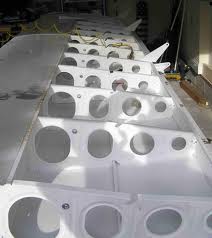





Published on Jun 26, 2023
The objective:
My objective is to determine if airplanes will stall, or suddenly lose necessary lift, at a steeper angle of attack if the dimple design of a golf ball is applied to the airfoil's surface.
2 identical airfoils made from balsa wood are tested in a homemade, open-circuit wind tunnel approximately 4 feet long. It is powered by a vacuum cleaner blowing into the front and a house fan pulling the air from the rear.
Strings taped on the top of the airfoil (known as tufts when applied this way) indicate stall. To test, I slowly increase the airfoil's pitch while the tunnel is running and record its angle of stall.
I do this 15 times while the airfoil is still smooth, I then add dimples to the top of the airfoil and test it 15 more times. I repeat with the second airfoil to ensure valid data.

The airfoils slightly performed better dimpled over smooth in every comparison regarding stall.
Test results show that dimpled wings stall at a slightly steeper, yet consistant, angle of attack. Research following my experimentation indicate that dimples may create friction on a wing's surface hindering its performance.
If this problem is solved this concept can theoreticly shorten take-offs and landings (STOL) and allow aircraft to be more manuverable; futhermore, I believe that my experiment has supported my hypothesis that dimpled wings stall at a steeper angle of attack than a traditional smooth wing.